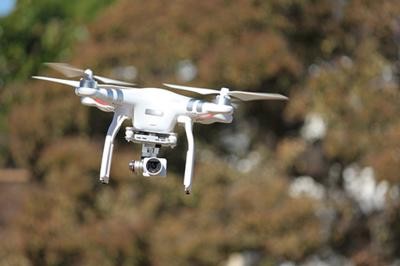Tue, Dec 26, 2023
Autonomous Industry Benefits From NASA Developments
NASA’s Langley Research Center in Hampton, Virginia has been hard at work, testing out the viability of multiple BVLOS drones flying routes sans a human operator.

Researchers are carrying out their small-scale tests using some simple, affordable drone units to see exactly what kind of infrastructural advancements need to be made behind the scenes. While autonomous aircraft are increasingly capable enough to fly a full mission from start to finish, the delicate symphony of dozens all operating in close proximity adds considerable complexity to the affair. NASA's testing is aimed at bearing out the issues, problems, and pitfalls of a hypothetical environ filled with uncrewed, autonomous air taxis, and they're already learning a lot.
“Flying the vehicles beyond visual line of sight, where neither the vehicle nor the airspace is monitored using direct human observation, demonstrates years of research into automation and safety systems, and required specific approval from the Federal Aviation Administration and NASA to complete,” said Lou Glaab, branch head for the aeronautics systems engineering branch at NASA Langley.
Traffic systems, communications, flight path management, obstacle avoidance, and operational resilience will add serious complexity to the otherwise uncomplicated A to B of drone operations. NASA's public ownership allows them to be a frontrunner of burgeoning tech that might otherwise languish in obscurity were it developed by private companies.
Some recent items were "ICAROURS (Integrated Configurable Architecture for Reliable Operations of Unmanned Systems) and the Safe2Ditch system, which allows aircraft to "observe the ground below and make an autonomous decision on the safest place to land in the event of an in-flight emergency." Both suites are aimed squarely at improving the safety of public aviation, and thanks to the taxpayer's (forced) generosity, the commercial sector can be equipped with the tools it needs to keep the traveling public safe.
More News
He Attempted To Restart The Engine Three Times. On The Third Restart Attempt, He Noticed That Flames Were Coming Out From The Right Wing Near The Fuel Cap Analysis: The pilot repor>[...]
Make Sure You NEVER Miss A New Story From Aero-News Network Do you ever feel like you never see posts from a certain person or page on Facebook or Instagram? Here’s how you c>[...]
From 2009 (YouTube Edition): Leading Air Show Performers Give Their Best Advice for Newcomers On December 6th through December 9th, the Paris Las Vegas Hotel hosted over 1,500 air >[...]
Aero Linx: NASA ASRS ASRS captures confidential reports, analyzes the resulting aviation safety data, and disseminates vital information to the aviation community. The ASRS is an i>[...]
“For our inaugural Pylon Racing Seminar in Roswell, we were thrilled to certify 60 pilots across our six closed-course pylon race classes. Not only did this year’s PRS >[...]
 NTSB Final Report: Rutan Long-EZ
NTSB Final Report: Rutan Long-EZ ANN FAQ: Turn On Post Notifications
ANN FAQ: Turn On Post Notifications Classic Aero-TV: ICAS Perspectives - Advice for New Air Show Performers
Classic Aero-TV: ICAS Perspectives - Advice for New Air Show Performers ANN's Daily Aero-Linx (06.28.25)
ANN's Daily Aero-Linx (06.28.25) Aero-News: Quote of the Day (06.28.25)
Aero-News: Quote of the Day (06.28.25)



